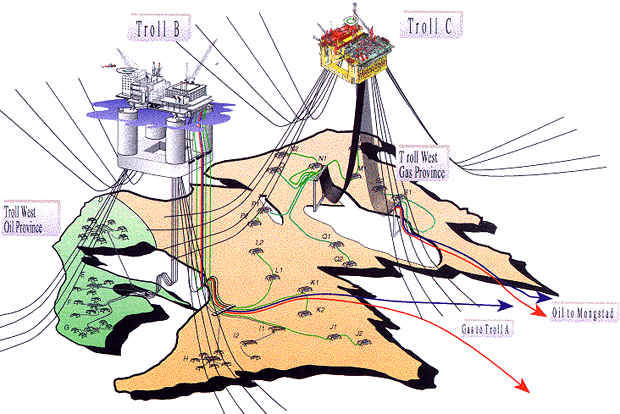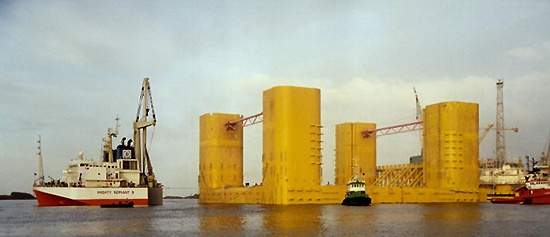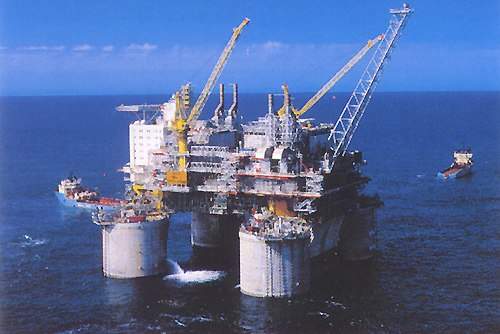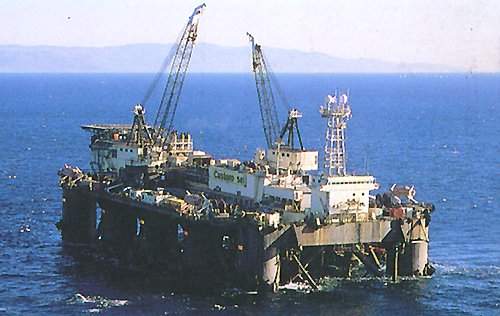Troll is primarily a gas field, one of the biggest in the North Sea, holding 60% of Norway’s gas reserves.
It also possesses significant quantities of oil in thin zones under the gas cap to the west of the field. The field as a whole consists of the main Troll East and Troll West structures in blocks 31/2, 31/3, 31/5 and 31/6, about 65km west of Kollsnes, near Bergen, in water depths of 315-345m. Most of the gas lies in Troll East.
The field is operated by StatoilHydro, which has a 30.58% interest. The other partners are the Norwegian Government’s Petoro (56%), Shell (8.1%) ConocoPhillips (1.62%) and Total (3.69%).
Regular oil production from the 22m to 26m thick reservoirs in the Troll West oil province,began in late 1995, with gas production starting from Troll East in June 1996.
Output for 2008 from the field is about 138,000 barrels per day (bpd) of oil and roughly 120 million metric standard cubic metres per day (Mmscm/d) of gas.
Discovery
Oil and gas were discovered by well 31/2-1 in 1979. This was followed by the drilling of 20 appraisal wells between 1980-93, all of which encountered quantities of oil and gas. In 1990, the horizontal test well 31/2-T1 was drilled in the oil province and this was followed, in 1991, by the horizontal test well 31/5-T 1 in the gas province.
The field is estimated to have recoverable resources of 1.8 trillion cubic metres of natural gas and two billion barrels of oil. Block 31/2 contains 32% of the Troll field’s reserves, while the remaining 68% lies in the three other blocks.
Production
Gas and oil from the field is extracted via three platforms – Troll A, B and C. The principal focus of gas production is Troll A, in Troll East (block 31/6).
With an overall height of 472m it is the tallest structure ever moved by mankind, and is the only one of its type on the NCS that is powered electrically from land. Gas rises to the 656,000t, Norske Shell-built structure through 40 wells.
The Troll West reservoirs are being drained by two platforms, Troll B and Troll C, both of which are semisubmersible production units. Since it came on-stream, Troll B has been used to produce oil from the oil province and the southern part of the gas province.
When it came on-stream in late 1999, Troll C started to deplete the northern part of the gas province.
Troll B
Production commenced on Troll B in September 1995, using eight predrilled wells in the oil province. The platform has also brought wells from the southern part of the gas province on-stream. Altogether, there are 24 subsea satellite oil producers tied back to the Troll B platform – 12 wells are in the H-cluster and 12 in well group 1.
The remaining oil reserves of the gas province have been developed by 58 horizontal wells, 14 of which have been drilled with two branches. These 58 wells are arranged in ten well groups, each normally containing two templates.
Between two and four wells have been drilled from each template. Three of these well groups – J, K and L, which contain a total of 18 wells – have also been tied back to Troll B and use the spare tie-in capacity on the platform.
Troll C
The remaining seven well groups have been routed to Troll C, which is located in the northern part of the gas province. There are no drilling facilities on Troll C. In early 1998, a second rig started pre-drilling wells in the gas province.
Production from this part of the field commenced in late 1999. The platform has a total displacement of 52,750t and can accommodate 70 people.
Development update
Oil production has been declining from a 2002 peak of more than 400,000bpd, so at the end of June 2008, StatoilHydro submitted a plan to Norway’s Ministry of Petroleum and Energy to improve oil recovery from Troll West while maintaining current gas production rates from Troll East.
With an investment limit of just under Nkr10bn ($2bn), the plan included a new gas injection plant on Troll B, a new 35in rich-gas pipeline from Troll A to the onshore Kollsnes gas processing plant and replacement of production pipes in the gas wells running up to Troll A. The diameter of the pipes will be increased, to give a lower pressure drop and increased production from the wells.
In February 2009, the sub project for replacement of flowlines in gas wells of Troll A platform was cancelled.
By 2010-11, the gas injection system will start functioning. The pipeline to Kollsnes will follow suit in accordance with the plan. The investment is considerably reduced to Nkr3.8bn from Nkr10bn.
StatoilHydro says gas injection on Troll B will increase the field’s oil reserves by 17 million barrels and raise total gas output 145Mmscm/d-165Mmscm/d.
As output starts to wane from Troll East, the company would increase gas output from Troll West, in about 2016. It is hoped the plan will stretch Troll’s oil profile well into the 2020s, while gas life is expected to end around 2060.










